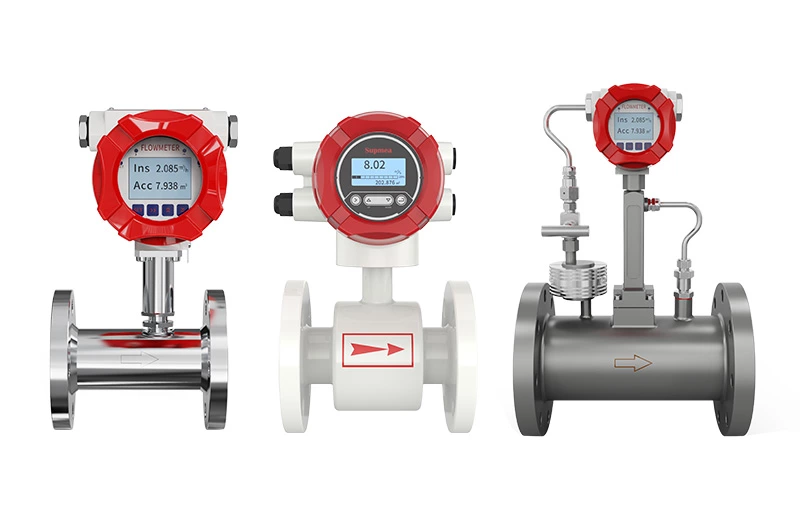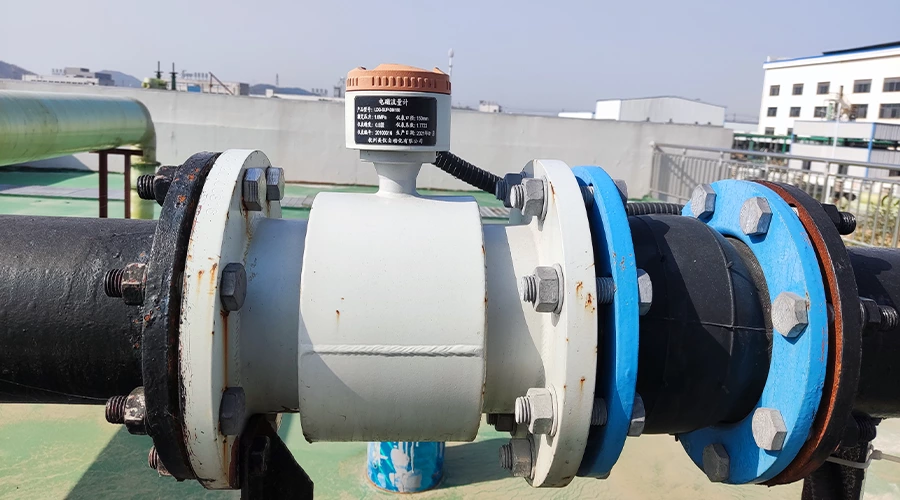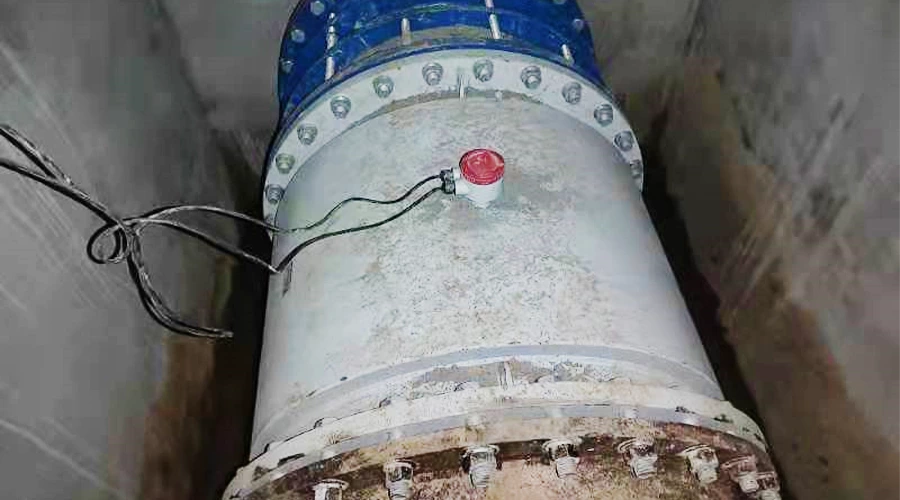Sludge Flow Meter for Return Activated Sludge: A Comprehensive Guide
What is Sludge Treatment?
Sludge treatment refers to the process of treating wastewater sludge to remove contaminants and other harmful materials before disposal. Sludge is the residual material that remains after primary and secondary treatment processes have been completed. It typically contains a high concentration of organic matter, nutrients, heavy metals, pathogens, and other pollutants, making it unsuitable for direct discharge into the environment.
The treatment of sludge involves several processes, including thickening, dewatering, stabilization, and disinfection. Thickening is the process of reducing the volume of sludge by removing excess water, while dewatering involves further reducing the moisture content of the sludge to make it easier to handle and transport. Stabilization is the process of converting the organic matter in sludge into a more stable and less odorous form. This can be achieved through aerobic or anaerobic digestion, composting, or other methods. Disinfection is the final step in sludge treatment, which involves killing any remaining pathogens or harmful microorganisms to ensure that the sludge is safe for disposal.
Sludge treatment is an important part of wastewater management, as it helps to protect public health and the environment by preventing the release of harmful pollutants into waterways and soil. Proper treatment and disposal of sludge also help to conserve resources by recovering valuable nutrients and organic matter that can be used for agricultural purposes or energy generation. However, sludge treatment can be a complex and costly process, requiring specialized equipment and expertise. Therefore, it is important to carefully consider the most appropriate treatment methods based on the specific characteristics of the sludge and local regulations.
What is Return Activated Sludge?
Return Activated Sludge (RAS) is a crucial component of wastewater treatment plants. To ensure its effective processing, the accurate measurement of its flow rate is of utmost importance. Sludge flow meters are specifically designed for this purpose, providing a reliable and cost-effective solution to measure the flow rate of RAS. In this article, we will discuss everything you need to know about sludge flow meters for RAS, including their working principle, types, applications, benefits, and more.
In wastewater treatment plants, RAS is an essential component that is used to recirculate the sludge from the secondary clarifiers back to the aeration tank. RAS plays a critical role in maintaining the desired level of microorganisms in the aeration tank, ensuring optimal treatment efficiency. To measure the flow rate of RAS accurately, sludge flow meters are used.
Working Principle of Sludge Flow Meters
Sludge flow meters use different technologies to measure the flow rate of RAS. However, the most common type of sludge flow meter is the magnetic flow meter, which works on the principle of Faraday's Law of Electromagnetic Induction. When the conductive sludge flows through the magnetic flow meter, it generates an electromotive force, which is directly proportional to the velocity of the sludge. The magnetic flow meter detects this electromotive force and converts it into a digital signal, which is used to calculate the flow rate of the sludge.

Types of Sludge Flow Meters
There are various types of sludge flow meters available in the market, each with its own set of advantages and limitations. Some of the most common types of sludge flow meters are:
1. Magnetic Flow Meters
As discussed earlier, magnetic flow meters are the most common type of sludge flow meter used for RAS. They are highly accurate and can measure the flow rate of both conductive and non-conductive fluids.
2. Ultrasonic Flow Meters
Ultrasonic flow meters use sound waves to measure the flow rate of sludge. They are ideal for applications where the sludge contains a high concentration of solids and debris.
3. Vortex Flow Meters
Vortex flow meters measure the frequency of the vortices created by the sludge as it flows through the meter. They are ideal for applications where the sludge has a low concentration of solids and debris.
Applications of Sludge Flow Meters
Sludge flow meters are used in various applications, including:
- RAS flow rate measurement
- Control of sludge thickening and dewatering systems
- Control of sludge recirculation pumps
- Monitoring of the aeration process
Benefits of Sludge Flow Meters
The use of sludge flow meters offers several benefits, including:
- Accurate measurement of RAS flow rate
- Improved treatment efficiency
- Reduced energy consumption
- Cost-effective solution
- Increased system reliability and uptime
- Maintenance of Sludge Flow Meters
Proper maintenance of sludge flow meters is crucial to ensure their optimal performance and longevity. Regular cleaning and calibration of the meters are necessary to prevent any buildup or inaccuracies in the measurements. It is also essential to monitor the meters for any signs of wear and tear and replace any damaged components promptly.

Conclusion
Sludge flow meters are a critical tool for measuring and monitoring the flow of return activated sludge in wastewater treatment plants. Accurate measurement of RAS flow rates is essential to ensuring that the treatment process is running efficiently and effectively. By choosing the right sludge flow meter and using it properly, wastewater treatment plants can improve their operations, reduce costs, and improve water quality.
FAQs
Why is accurate measurement of RAS (Return Activated Sludge) flow rates important?
Accurate measurement of Return Activated Sludge (RAS) flow rates is crucial in wastewater treatment plants. RAS is the activated sludge that is returned to the aeration tank after being treated in the secondary clarifier. The flow rate of RAS must be accurately measured to ensure that the correct amount of biomass is present in the aeration tank to maintain an optimal level of treatment. If the RAS flow rate is too low, the biomass concentration in the aeration tank decreases, leading to a decrease in treatment efficiency. On the other hand, if the RAS flow rate is too high, the biomass concentration increases, leading to increased energy consumption and potential operational issues. Accurate measurement of RAS flow rates also helps in determining the overall treatment efficiency and identifying any potential problems in the treatment process. Therefore, accurate measurement of RAS flow rates is essential for efficient and effective wastewater treatment.
What types of sludge flow meters are available?
There are several types of sludge flow meters available on the market today. One popular type is the ultrasonic flow meter, which uses sound waves to measure the velocity of the sludge as it flows through a pipe. Another type is the magnetic flow meter, which uses a magnetic field to measure the flow rate of the sludge. A third type is the Coriolis flow meter, which measures the mass flow rate of the sludge as it passes through a vibrating tube. Each type of flow meter has its own advantages and disadvantages, and the choice of which type to use will depend on factors such as the type of sludge being measured, the accuracy required, and the cost of the equipment. Ultimately, it is important to choose a flow meter that is reliable, accurate, and easy to maintain in order to ensure accurate measurements of sludge flow over time.
What factors should wastewater treatment plants consider when choosing a sludge flow meter?
Wastewater treatment plants need to carefully consider several factors when selecting a sludge flow meter. Firstly, the meter should be able to accurately measure the flow rate of sludge, which is often thick and viscous. This requires a meter with a large diameter and a high level of accuracy. Secondly, the meter should be durable and able to withstand the harsh conditions of a wastewater treatment plant, including exposure to corrosive chemicals and extreme temperatures. Thirdly, the meter should be easy to install and maintain, with minimal downtime required for calibration or repairs. Other important factors to consider include the cost of the meter, the availability of spare parts and technical support, and the compatibility of the meter with existing control systems. Ultimately, choosing the right sludge flow meter can help wastewater treatment plants improve their efficiency and reduce costs while ensuring compliance with environmental regulations.
How can sludge flow meters improve the efficiency and effectiveness of the treatment process?
The sludge flow meters play a critical role in improving the efficiency and effectiveness of wastewater treatment processes. By providing accurate flow measurement data, these meters help operators optimize their processes, reduce downtime and maintenance costs, and ensure compliance with environmental regulations.




